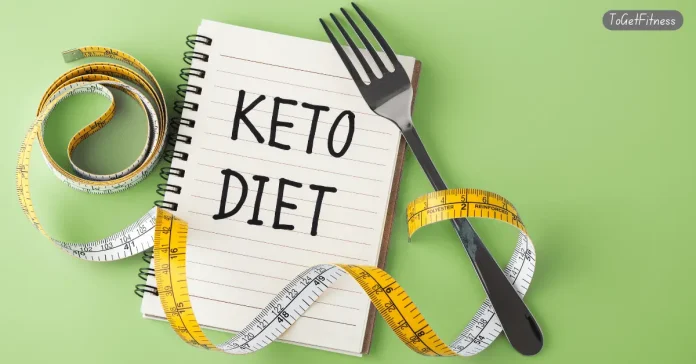Looking for a diet program that will help you lose weight? You may want to try the ketogenic diet. Not sure where to start and want more information on the ketogenic diet? Look no further! In the following article, we’ll cover everything you need to know about the ketogenic diet, from what it is and why it works, to how it can help you during your weight loss journey, and sample meal plans.

What is The Ketogenic Diet?
The ketogenic diet is a high-fat, low-carbohydrate eating plan. Also called “keto” or “ketosis”, the goal of this type of eating program is to transition your body from using carbohydrates for fuel to using fat as its primary energy source. This fuel switch is achieved by eating fewer carbohydrates and increasing your consumption of healthy fats such as olive oil and avocado.
Why Does It Work?
Ketosis occurs when there are no remaining glycogen stores in your muscles or liver (the traditional source for carbohydrate energy), so your body is forced to find alternative sources of energy. During this process, called ketolysis, fatty acids from stored fat break down into molecules known as ketones which are then used by muscles as an energy source instead of carbs.
Eating Healthy Fats On The Keto Diet
Healthy fats should make up a large portion of your meals while on the keto diet plan; they provide essential vitamins and minerals that can’t be found in other foods like vegetables. Foods like avocados, nuts and seeds are especially beneficial because they contain unsaturated fats that promote better cardiovascular health while helping you reach your weight loss goals at the same time.
Foods To Avoid On The Keto Diet
It goes without saying that processed/junk food should be completely off-limits while on the keto diet. Additionally, certain types of grains (especially wheat products) can have an adverse effect on blood sugar levels and should be avoided if possible. High sugar fruits like watermelon should also be limited due to their sugar content; pastas made with white flour should likewise be eaten sparingly if at all due to their high glycemic index (GI). Lastly, certain dairy products can trigger inflammation in some people so those with sensitivity issues should eliminate them altogether or at least limit their intake significantly.
Meal Plan Ideas For A Keto Dieter
Breakfast: Start off with a hearty breakfast by combining eggs with spinach sautéed in butter or olive oil over medium heat until just cooked; serve with some fresh fruit slices or toast made from whole grain bread for added flavor and texture.
Lunch: Try a veggie-heavy dish like zucchini noodles topped with marinara sauce or homemade pesto; combine it with some roasted vegetables such as bell peppers and onions for crunchiness and extra nutrients; shredded cheese on top gives this meal both flavor and protein! Supper: Bake salmon fillets seasoned with herbs like rosemary or oregano along with side dishes like cauliflower mashed potatoes; roasted Brussels sprouts drizzled in balsamic vinegar add even more flavor plus dietary fiber! Snacks: If you’re looking for something quick between meals opt for nuts such as walnuts or almonds alongside Greek yogurt spiked-with cinnamon & honey; chunks of cheddar cheese paired with sliced cucumbers works too…just keep fats within healthy proportions throughout your day!
The Bottom Line
The key takeaway here is that transitioning into a state of nutritional ketosis will eventually put an end to carb dependence while allowing you to tap into previously inaccessible fat reserves, thus promoting effective weight loss – IF done correctly! Just remember to stock up on healthy fats, reduce total carbohydrate consumption significantly below 20g per day
Some Important FAQs on ketogenic diet
What are the benefits of a ketogenic diet?
Weight Loss: The goal of a ketogenic diet is to induce a state of ketosis, which your body enters when it’s burning fat for energy rather than carbs. This can help you lose weight quickly and effectively.
Improved Mental Clarity: As your body burns fat for fuel, it produces molecules called ketones that can boost brain function resulting in better focus, concentration and improved alertness.
Reduced Inflammation & Chronic Disease Risk: Aside from weight loss benefits, research has also shown that a ketogenic diet can help reduce inflammation in the body which could lead to a lower risk for developing chronic diseases such as heart disease and cancer.
How long does it take to start seeing results from a Keto Diet?
Is it safe to follow a keto diet for an extended period of time?
What kind of foods should I be eating on a keto diet?
Healthy fats such as olive oil, coconut oil, avocados, nuts, and seeds.
Proteins like fish, eggs, grass-fed meat and poultry, and full-fat dairy products.
Low-carb veggies such as leafy greens, broccoli, cauliflower, zucchini and squash.
Some fruits like berries in moderation due to their sugar content.
Whole grains like quinoa or oats are best avoided because those contain higher amounts of carbs.
These kinds of foods make up the majority of what you should be eating on a keto diet to achieve optimal results!
